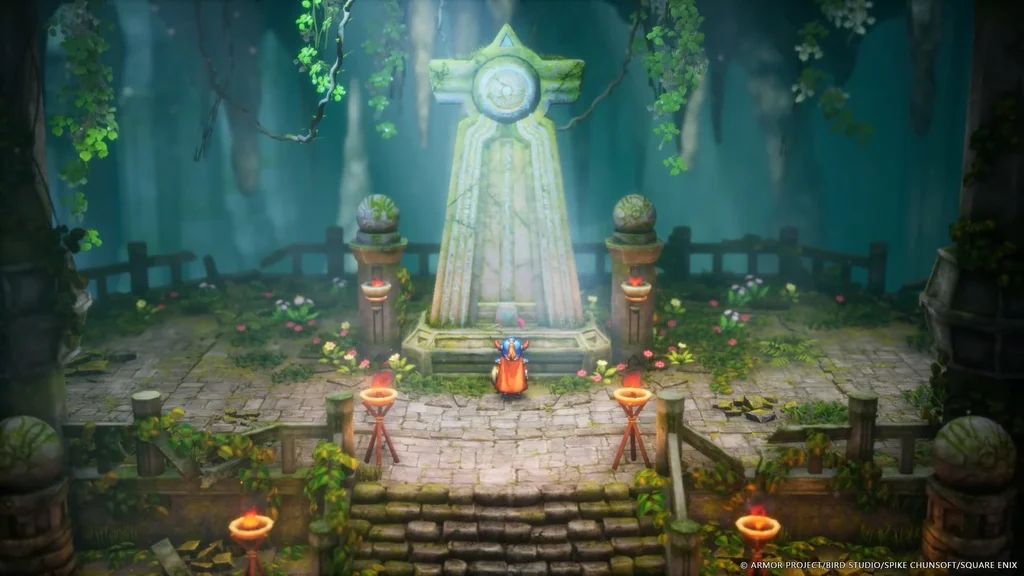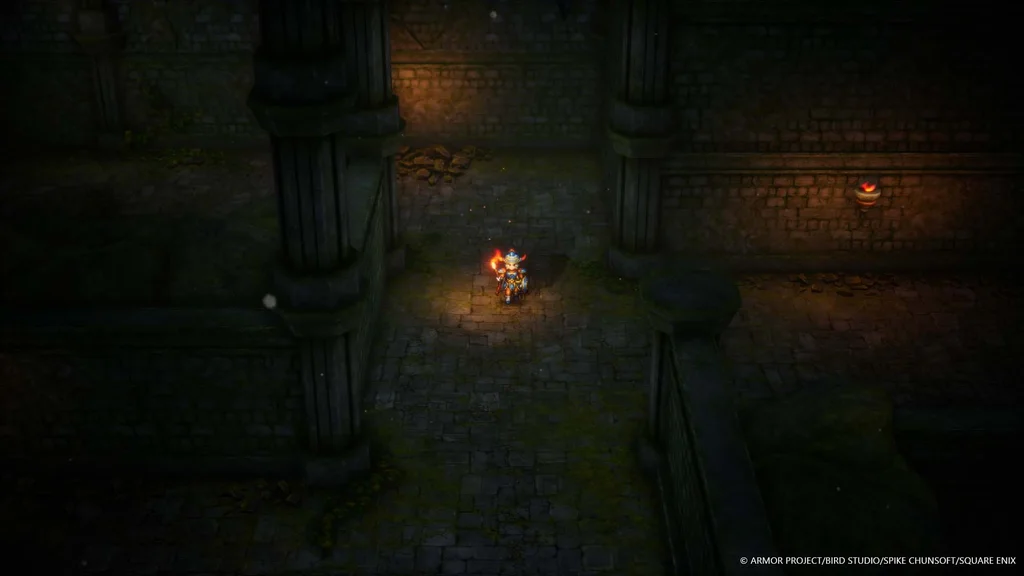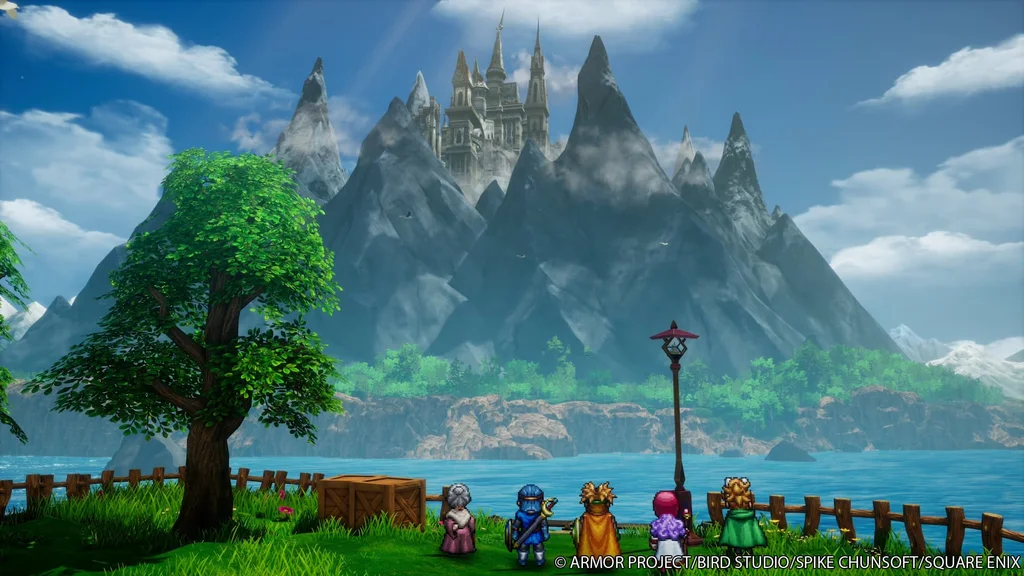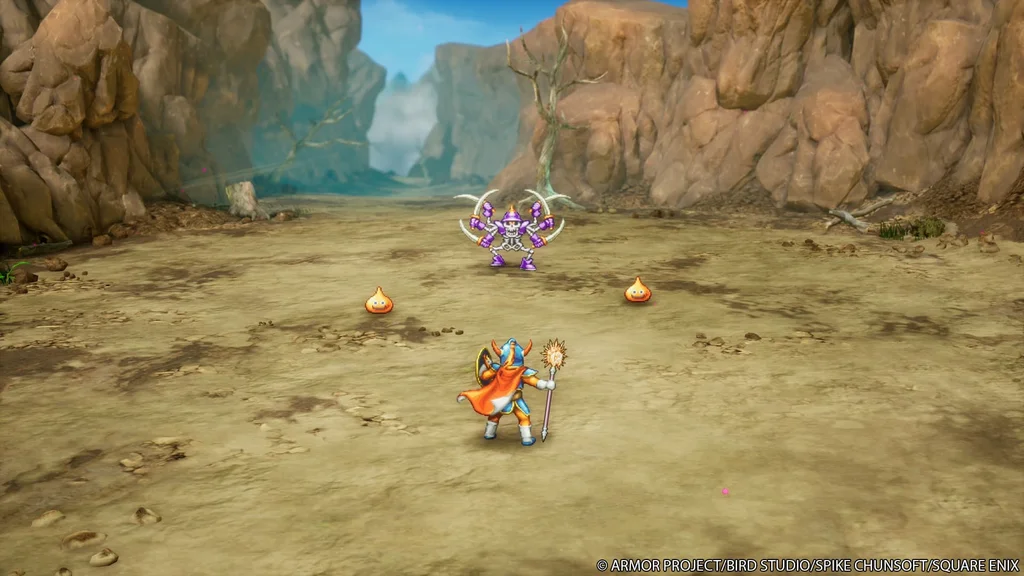From the moment the orchestral overture began, I knew that this remake of the first two Dragon Quest games would be the perfect way to discover the roots of this fantasy RPG series. With an orchestral soundtrack, voice-over, extra content, and new playable characters, this remake isn’t just a time capsule to 1985; it’s a modernisation of two forty-year-old classics for new and returning audiences.
Dragon Warrior
For those unfamiliar with the world of video games, I will begin this review with a brief history of the Dragon Quest series. Dragon Quest is a series of Japanese role-playing games that began way back in 1985. There are eleven core games and multiple spin-offs, all featuring character designs by the legendary Akira Toriyama, who is known for his hit manga series Dragon Ball. The games weren’t particularly well known in the West until the later releases, but in Japan, the series quickly became a cultural phenomenon — so much so that the third game, which received a remake last year, sold one million copies on its first day. In fact, 300 students were even prosecuted for truancy because they stayed home to buy and play the game. This series is iconic, so why haven’t the first two games been given enhanced rereleases like the others from the DS onward? (Not counting the smartphone releases.)
Now, Square Enix thinks the world is ready for both original Dragon Quest games in one package. They have also been given an HD-2D makeover. This is the Dragon Quest I-II HD-2D Remake.
Presentation
Let’s start by going over the changes that will immediately catch your attention: The new visuals and audio design. Dragon Quest and Dragon Quest II were originally released on the Nintendo Entertainment System, an 8-bit console. They haven’t aged particularly well for modern audiences. Fortunately, the Square Enix HD-2D treatment never fails to impress. New sprite work for characters and monsters, smooth animations, and stunning scenery take immersion to a whole new level. Everything springs to life in such detail that, for the first time in a long while, I truly felt like I was going on an epic adventure in a pixel RPG. A large part of this feeling is thanks to the music. Every part of the soundtrack has been remade and is performed by the Tokyo Metropolitan Symphony Orchestra. The old songs haven’t changed drastically, but they sound much more dramatic and convey a lot of emotion. Caves feel much more eerie thanks to the flutes and strings in the score, while towns feel like peaceful havens in an unforgiving overworld thanks to the cheerful music. This game isn’t just a modernisation of an old formula — it’s a work of art.
Upgrades and features
The team at Square Enix didn’t stop there, though. There are also lots of enhancements to the gameplay and story. The two games differ slightly in this respect, so I’m going to discuss them separately at first.
Dragon Quest I may be the most basic RPG of the two in terms of gameplay. However, the unforgiving nature of the original has been softened, in part thanks to a new combat system offering more abilities for your legendary hero. These can be unlocked while levelling up or found in scrolls during your journey. The Sigils, which debuted in Dragon Quest II, are now also available in the first game. Offering occasional buffs to spells, healing or item effects. These extra options are useful in this game because your hero is alone on his journey through Tantadell. Even so, the monsters in this game no longer engage in one-on-one combat. They now bring backup to a fight. As if that weren’t enough to keep you on your toes, the game features new dungeons and story segments that make it more epic in scale.
Dragon Quest II is the more story-driven of the two games and receives even more additional content. You also get access to sigils and scrolls, and the story is deepened further with new locations and storylines. The game features a party system and adds a new playable character to the mix. The game was already longer than the first instalment, but you should now allow for around 45 hours of gameplay. I could go on and on about the additional content. Both games now offer autosave features, difficulty modes, and many other quality-of-life improvements that bring them up to modern standards. You can customise your experience in the Misc menu, so experiment and become the hero you deserve to be!
Old School
I had a good time playing the HD-2D remake of Dragon Quest I-II. However, from time to time, I couldn’t shake the feeling that, despite all the improvements to the gameplay, the game was showing its age. One aspect did this more than any other: the grinding. In Dragon Quest I in particular, I would sometimes hit a wall out of nowhere where a boss or group of enemies would be too powerful, despite the fact that all the normal enemies in the area were no match for me. I had to go out of my way to visit areas of the overworld that I wasn’t supposed to be in yet in order to level up my character and find stronger gear. Once I discovered where the metal slime was, this process became quicker, but I felt as though the game was trying to extend its runtime by making me do this. The addition of groups of enemies in Dragon Quest I also detracted from the experience. Mid- to late-game, when enemies became more powerful, I was outclassed more quickly and became frustrated at times. These problems presented themselves less often in Dragon Quest II because my party could pick up the slack if one member fell.
Nevertheless, I plan to finish both games because I believe everyone should experience them. Dragon Quest fan or not. They aren’t perfect by any means, but that’s what you should expect from games with roots stretching back about forty years. In a strange way, I can set aside my doubts about certain gameplay choices more easily because I know that’s how it was at the time. I also have a good idea of the direction in which the Dragon Quest series is heading. Square Enix isn’t finished with the IP yet: Dragon Quest XII is still on its way, and early next year, we can expect the remake of one of my favourites: Dragon Quest VII. History is still being made, so let’s enjoy the Dragon Quest I-II HD-2D Remake for what it is: A timeless classic.
Conclusion
Dragon Quest I+II HD-2D Remake is a tribute to the two iconic games released forty years ago. It is a museum piece that showcases the origins of the Fantasy JRPG series to modern and returning audiences. The stunning visuals and musical score will sweep you away, while new additions to the gameplay and storyline will ensure this classic formula remains engaging. However, it’s important to bear in mind that these games may occasionally reveal their age, so be prepared for the occasional grind for EXP or frustrating battle. If you would like to experience Dragon Quest I-II HD-2D Remake for yourself, it is available on the Nintendo Switch, Xbox, PlayStation 5 and PC.





